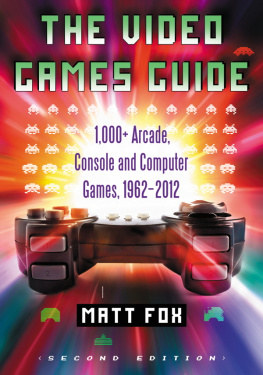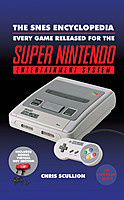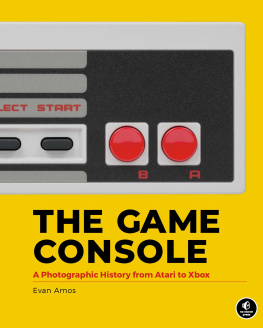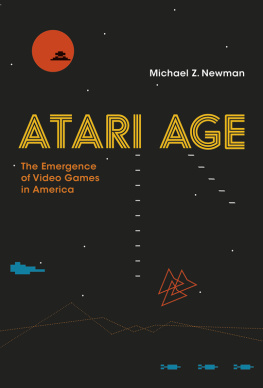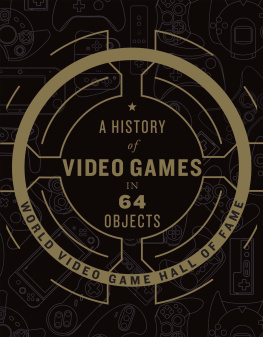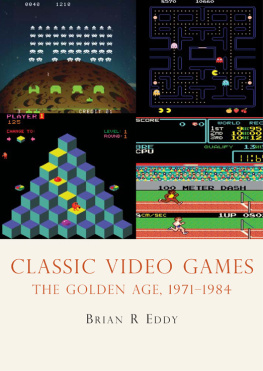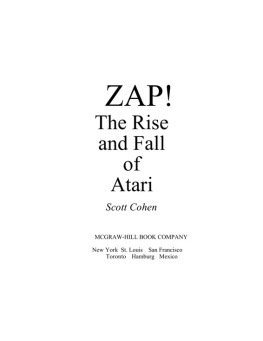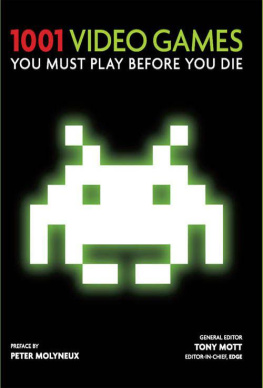Table of Contents
LIBRARY OF CONGRESS CATALOGUING-IN-PUBLICATION DATA
Weiss, Brett, 1967
Classic home video games, 19721984 : a complete reference guide / Brett Weiss.
p. cm.
Includes bibliographical references and index.
ISBN-13: 978-0-7864-3226-4
1. Video gamesHistory. I. Title.
GV1469.3.W47 2007
794.8dc22 2007017510
British Library cataloguing data are available
2007 Brett Weiss. All rights reserved
Cover images 2007 Digital Vision and Shutterstock
McFarland & Company, Inc., Publishers
Box 611, Jefferson, North Carolina 28640
www.mcfarlandpub.com
Classic Home Video Games, 19721984:
A Complete Reference Guide
BRETT WEISS
McFarland & Company, Inc., Publishers
Jefferson, North Carolina, and London
To my lovely wife, Charis,
for her love and support,
and to Ryan and Katie,
who enjoy playing video games with their dad
ACKNOWLEDGMENTS
Special thanks to Charis Weiss for her prodigious photography and computer skills, along with lots of patience and understanding. Thanks to my mom, Jo Weiss, who helped foster my love of reading, and to my dad, Perry Weiss, who taught me through example the value of hard work.
PREFACE
Like rock n roll, comic books, and horror movies, video games have gotten a bad rap over the years from an assortment of well-intentioned folks, including parents, preachers, politicians, and other authority figures. During the early 1980s, C. Everett Koop, former surgeon general of the United States, went so far as to say that video games were hazardous to the health of children. And, like most kids of the time, I couldnt have cared less. All I knew was that I loved going over to various friends houses and playing their Atari 2600s, Intellivisions, Astrocades, and other programmable game systems. Blowing up alien invaders, speeding around raceways, munching dots, piloting airplanes, and other such virtual endeavors were pure nirvana, with each game cartridge for each console holding the promise of a new adventure.
Growing up a video kid didnt appear to hurt my health, despite Dr. Koops warnings. I still played basketball, explored the outdoors, rode my bike, read books, and had non-gamer friends. Unfortunately, I lacked the funds for my own system, but that didnt keep me from dreaming, or from wearing out my welcome at a number of video gameenhanced households. As luck would have it, between all my friends and cousins, I had access to quite a large collection of cartridges and systems. Eventually, I began beating my friends at their own games, despite the fact that they could play them anytime they wanted.
In the summer of 1982, when I was 15 years old, Coleco began showing ads on television for their new ColecoVision game console, which had amazing, arcade-quality graphics. The colorful, unbelievably faithful Donkey Kong screenshot shown on TV sold me on the system, and I knew I had to have a ColecoVision, even if I had to lie, cheat, steal, or kill to get one. Going to the arcades was great, but the prospect of playing arcade-like video games in the comfort of my own home, without having to shell out untold numbers of quarters, sent my imagination soaring. (Why the ownership of a ColecoVision doesnt hold a spot near the top of Maslows Hierarchy of Needs is something I may never understand.)
The original retail price for the Coleco-Vision was close to $200, but Santa only brought gifts totaling as much as $100 to our house, so there was a real dilemma. Fortunately, by mowing lawns, I managed to save up the additional money needed, and I never had to resort to murder or thievery. Santa was grateful for the assist, and Christmas of 1982 saw me staying up late into the night, perched before the living room TV set, joystick in hand, marveling over the gorgeous visuals, charming music, and dynamic gameplay of Donkey Kong and Mouse Trap . Thus was born a lifelong hobby that has resulted in the ownership of hundreds of video game cartridges and more than 30 different consoles.
The question remains: What do I find so appealing about video games? Part of the answer is summed up tidily in Websters Desk Dictionary of the English Language (1990), which gives the following definition for a video game: any of various electronic games that involve moving or movable images controlled by the player on a TV screen. Thanks to such industry pioneers as Ralph Baer, who in 1966 conceived the idea of using a television set to play games, and Nolan Bushnell, who in 1972 invented Pong and founded Atari, a common TV could be transformed into an interactive device, giving users the thrill of manipulating the onscreen action, as opposed to simply watching it unfold. This was a heady concept to my impressionable young mind, and one I still find endlessly intriguing. In the 1960s, media theorist Marshall McLuhan was fond of referring to television as a tactile medium, but the advent of video games permitted a literal interpretation of these words from the sage of the information age.
Further, video games give players control of a closed, finite universe, governed by a specific set of rules, as opposed to actual life, where we oftentimes wing it as we go along. Theres a rational, almost sympathetic logic to video games that reality lacks. The players character or ship may get killed or destroyed, and there may be a few unpleasant surprises along the way (such as the appearance of a virtually unbeatable foe), but the actual game player, with the simple press of a reset button, will live to fight another day, strive for a higher score, or try a new game. This is decidedly unlike the real world, where do-overs are rare, and a single misstep, physical breakdown, or twist of fate can (and eventually will) result in grim death. Game over, indeed. Video games are no substitute for real world pleasures (marriage, the birth of a child, spiritual enlightenment, what have you), but they do provide a nice reprieve from real world woes.
I enjoy video games from all eras, but Im especially fond of the classics. Unlike most modern video games, which have complicated controls, expansive worlds, varied missions, or meandering, non-linear environments, games from the 70s and early 80s usually consist of one to four game screens, simple rules, and finely honed, clearly defined objectives. (Some games, such as Adventure and Pitfall! for the Atari 2600, are a bit more involved, but those types of games are the exception to the rule.) Most of the more enjoyable classics, such as Centipede , Galaga , Mr. Do! , and Ms. Pac-Man , are easy to learn yet hard to master, and have an addictive intensity and refined play mechanic that have largely been lost in other, later games.
Games for current consoles (PlayStation3, Nintendo Wii, Xbox 360) certainly have much to recommend, such as lifelike graphics, cinematic storylines, immersive sounds, and realistic simulation capabilities, but theres no beating the classics when it comes to subtle strategies, fast action, and sheer blood-pumping excitement. While most newer games frequently give players room to roam, regroup, and readjust, most retro titles put the players character, ship, or other controllable object or objects in a state of constant peril, demanding that the player give the game his or her undivided attention every step of the way. In short, older games, despite their relative lack of technical sophistication, are oftentimes more fun, more challenging, and more accessible than newer ones.
In addition to playing video games, I enjoy reading about them as well. Back in the day, I bought countless issues of Electronic Games , JoyStik , and other video game magazines and read many more while standing at the magazine racks of various grocery stores (hey, I couldnt afford to buy all of them). To me, reading about video games is almost as much fun as playing them. These days, finding information about older games, especially some of the more obscure titles, is often difficult. When compared to movies, comics, and other popular art forms, classic video games are severely underrepresented in the publishing industry. This volume is intended to rectify that discrepancy, at least to some degree.


